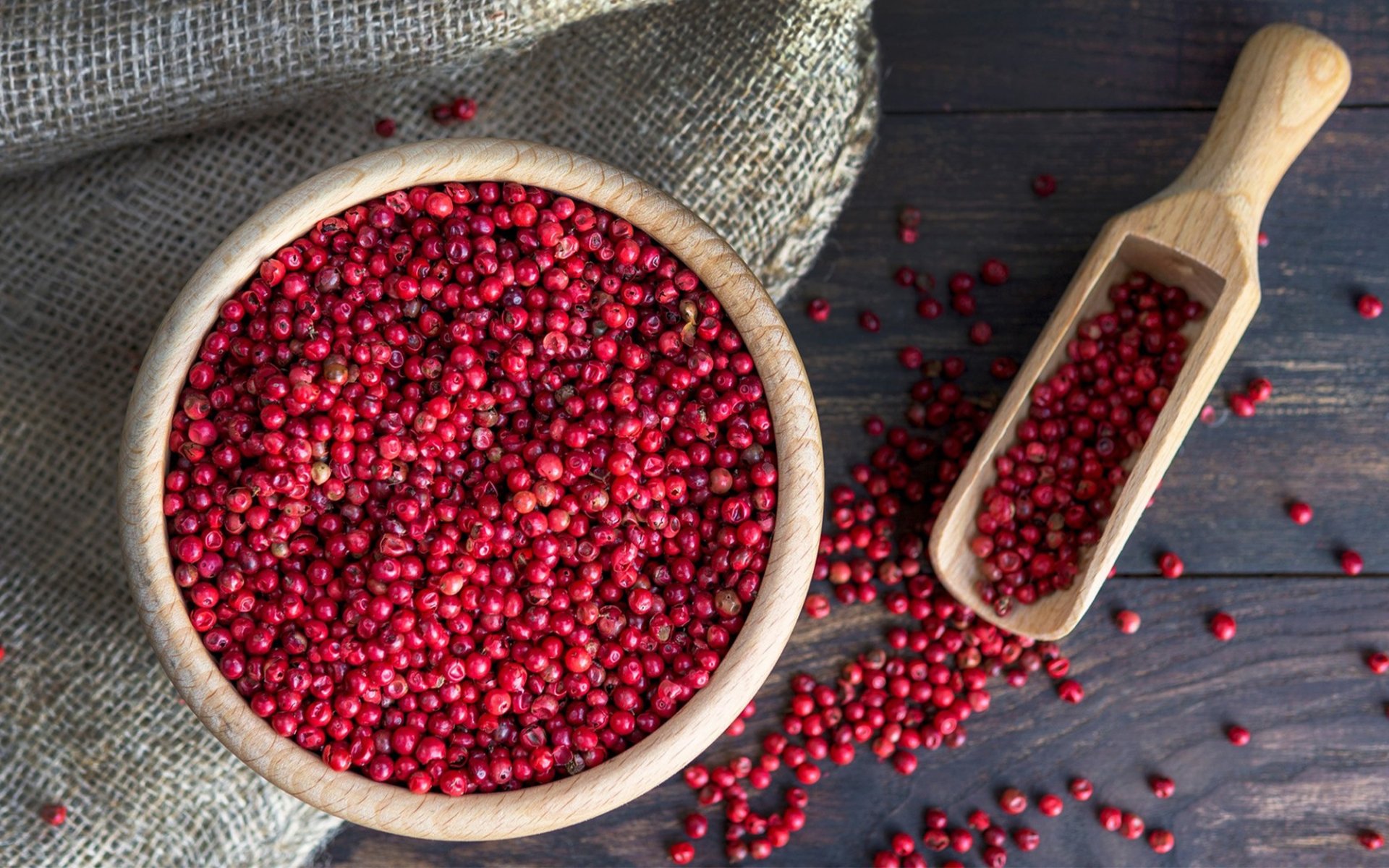Pink Pepper

Despite its name, Pink Pepper is not related to the black or white peppercorns we commonly know. Instead, this beautifully colored spice is the dried berry of a tree scientifically known as Schinus Terebinthifolius, which is sometimes referred to as the Brazilian peppertree. Originating from South America, pink pepper is a fascinating ingredient. Today, Rimping Supermarket invites you to learn more about this charming spice.
Origins and Medicinal Uses in South America
The use of pink pepper dates back to ancient times. Indigenous communities in South America traditionally used pink pepper as a traditional medicine to treat various ailments. It possesses notable properties, including antibacterial and anti-inflammatory effects, and was used to aid respiratory issues and digestive problems.
Pink pepper thrives in the hot, humid climates of South America, particularly in Peru, Brazil, and other regions within the Andes Mountains and the Amazon basin. When unripe, the berries are green, but upon ripening, they transform into vibrant shades of pink to red.
Why Is It Called Pink Pepper?
The reason these berries are called pink pepper is twofold: primarily, their outer appearance resembles peppercorns, and secondly, they are used in cooking to season dishes, much like traditional pepper. Hence, the name pink pepper was adopted.
Journey to Europe and Widespread Popularity
In the 16th century, Spanish colonists arrived in South America and first encountered pink pepper. They later introduced it to Europe.
In Europe, pink pepper quickly gained popularity due to its vibrant color and unique flavor profile. Unlike black or white pepper, it isn't intensely hot. Instead, it offers a complex taste that is mildly spicy with subtle sweetness, a hint of tartness, and a fragrant, fruity aroma reminiscent of wild berries. European chefs readily adopted it to season various dishes, including salads, soups, and marinades for meats, adding a distinctive aroma and sophisticated flavor.
Pink Pepper in Global Cuisine and Expanding Cultivation
As European colonies expanded, pink pepper was introduced worldwide, including in India, Southeast Asia, and Africa. By the 19th century, it made its way to the United States, becoming a part of diverse and intriguing culinary traditions.
In the 20th century, the cultivation of pink pepper increased in other regions. Although it prefers hot and humid conditions, pink pepper can tolerate a variety of climates due to its drought-resistant nature. Today, major producers of pink pepper include Madagascar, Brazil, Peru, and Reunion Island.
Currently, pink pepper is used in many types of cuisine, including sauces, marinades, seafood dishes, and baked goods. It's also a popular ingredient in cocktails, spirits, and other beverages, such as Gin & Tonic, to add a complex aroma and flavor to drinks.
With its beautiful color, unique aroma, and complex flavor, pink pepper is a distinctive spice that can elevate your dishes and beverages to a new level.
You can find pink pepper at all Rimping Supermarket branches!


